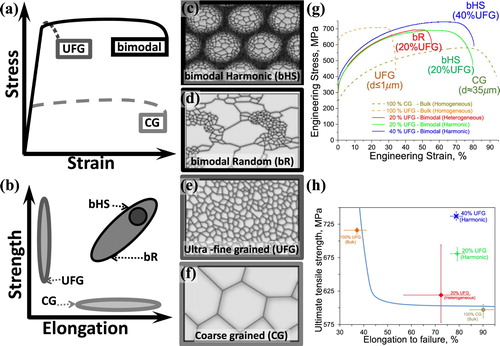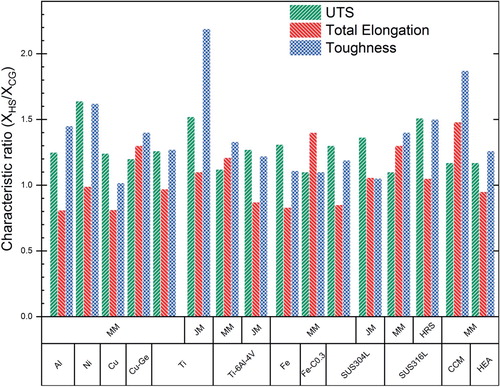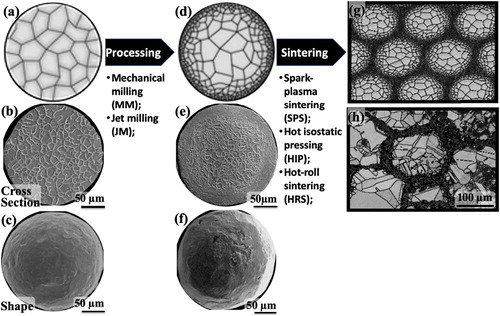Figures & data
Figure 1. Schematic illustrations of (a) nominal stress–strain curves for ductile but soft (light-grey dash line), strong but having very limited ductility (dark-grey dot line) and strong and ductile (black solid line) that are representative of coarse grain (CG), ultrafine-grain (UFG) and bimodal structure materials (bR and bHS), respectively; (b) expected ranges of structural properties for a wider spectrums of CG, UFG, bR and bHS materials presented in ‘Elongation-Strength’ property space; and (c–f) respective microstructures. Examples of experimental results for stainless steel SUS304L: (g) engineering stress–strain curves for the material with CG, UFG, bR and bHS microstructures having 20% and 40% UFG phase fraction; and (h) structural property variations of the material in the microstructure states of interest.

Figure 2. Representative summary on principal structural characteristics in various bHS materials fabricated thus far. Abbreviations used to identify techniques for the processing of metal powders are MM for mechanical-milling, JM for jet-milling and HRS for hot-roll sintering. CCM and HEA stand for Co-28Cr-6Mo and CrMnFeCoNi high-entropy alloy, respectively.

Figure 3. Schematic figures (a,d,g), secondary-electron SEM micrographs (b,c,e,f) and EBSD grain-boundary map (h) illustrating various stages of bHS materials fabrication on the example of Cu: initial powder particles with coarse grain structure (a–c), processed powder particles with bimodal gradient grain structure (d–f) and sintered bHS material (g,h).

